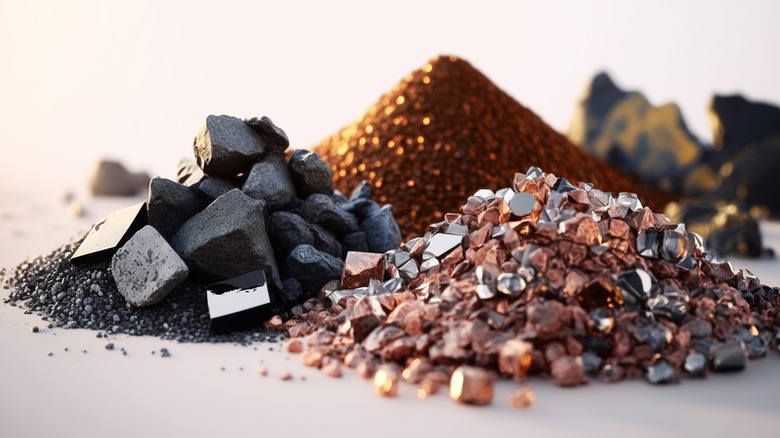
China could grind worldwide car production to a halt -- and already has. China woke the world up when this happened on April 4, 2025. China accomplished this through its near-total control of and export restrictions on the supply of heavy rare earth elements
, without which new cars cannot be built. These critical minerals are also required by military contractors, the semiconductor industry, and aerospace manufacturers.The April 2025 rare earth supply shutoff quickly exhausted the auto industry's
just-in-time supply chains. Ford's Explorer SUV plant had to shut down, while several European carmakers also had to cease production. There were repercussions felt all around the world. While these restrictions were relaxed in June, they could be activated again, depending on how worldwide trade tensions play out among the global users of rare earths. Electric cars (EVs) use large quantities of these materials, and there is a downside of dependence on rare earth elements for electric cars.
Rare earth elements are a group of 17 elements, including the 15 lanthanides found on the periodic table (elements 57 through 71). To be specific, these lanthanides include Lanthanum, Cerium, Praseodymium, Neodymium, Promethium, Samarium, Europium, Gadolinium, Terbium, Dysprosium, Holmium, Erbium, Thulium, Ytterbium, and Lutetium. Also included are the metals Scandium (element 21) and Yttrium (element 29). While these elements are abundant, they are found in very low concentrations and are difficult to extract.
Read more: 5 Of The Highest Horsepower Muscle Cars Of The 1980s
What Are Rare Earth Elements Used For In A Car?

Rare earths are found in a wide variety of different places within the average automobile, in both internal combustion engine (ICE) and electric vehicles (EVs), and are well-known for making the strongest permanent magnets. These include motors used for electric windows and air conditioning systems, which incorporate Terbium or Neodymium. Magnets using Neodymium are also used in a car's power seats, audio speakers, and power steering. Larger motors with rare earth magnets using Neodymium are used to drive EVs.
Yttrium is used in spark plugs in ICE and hybrid vehicles to extend their service life. Cerium is used to polish car windows to a brilliant gloss, and can also be used to remove wiper scratches from your car's windshield. Another use for Cerium is in catalytic converters to minimize emissions. Lanthanum is used to refine gasoline. Sensors used in 'drive by wire' systems incorporate Samarium into their magnets. Hybrid vehicles that use NiMh batteries also use Cerium and Lanthanum in those batteries.
Bottom line, rare earths are essential for many different parts and processes applied to all vehicles, whether ICE or EV. Without a steady supply of rare earth elements, the auto industry as it stands is out of business.
Is There Any Way To Avoid Using Rare Earth Elements From China?

Unfortunately, the U.S. has virtually no way to process or refine rare earth elements into the products that the auto industry needs within our country. In addition, there are simply no other significant producers of these refined rare earth elements located outside of China, which currently controls not only 69% of rare earth mining but also 100% of refined rare earth elements. This has a lot to do with why China is far ahead of the U.S. in terms of EVs.
Another major issue for those who would process and refine rare earth elements in the U.S. is handling them in an environmentally responsible way. The process involves mining the ore, concentrating it, separating it into the various rare earth elements, purifying it, then adding these elements to other materials to make the end products needed by the car industry. The entire process uses a huge amount of energy and generates a tremendous amount of waste products, which include radioactive uranium and thorium, sulfuric and hydrofluoric acids, and heavy metals like lead and arsenic.
The image above shows how rare earths are mined in certain parts of China, where worker protections are few, toxic chemicals are used, and 'cancer villages' located near mines have been identified by Chinese citizens. China seems to be willing to pay the environmental price for its rare earth dominance. Nevertheless, researchers are trying to find less damaging mining methods, as well as ways to avoid using rare earths in the first place.
Want the latest in tech and auto trends? Subscribe to our free newsletter for the latest headlines, expert guides, and how-to tips, one email at a time.
Read the original article on SlashGear.













